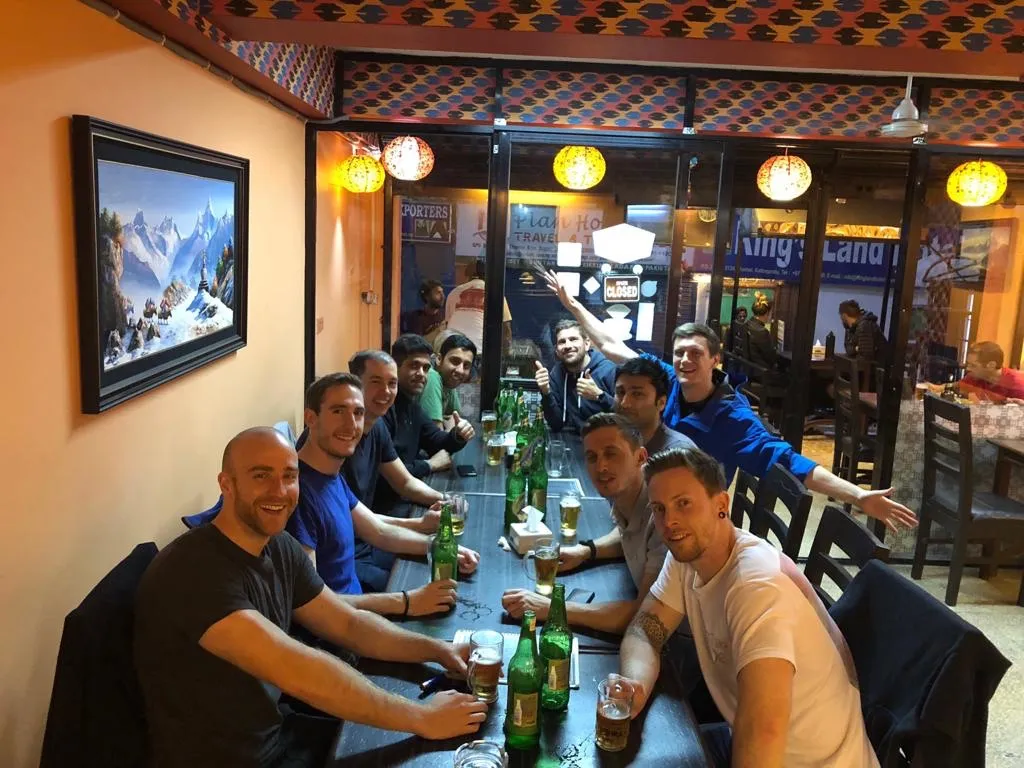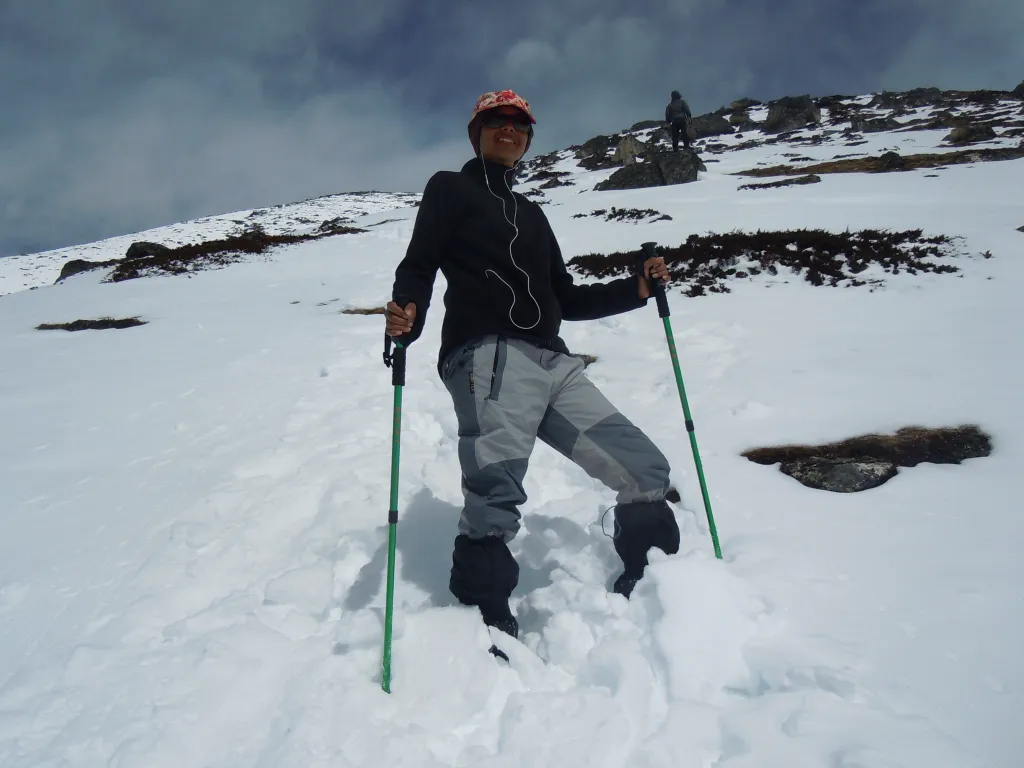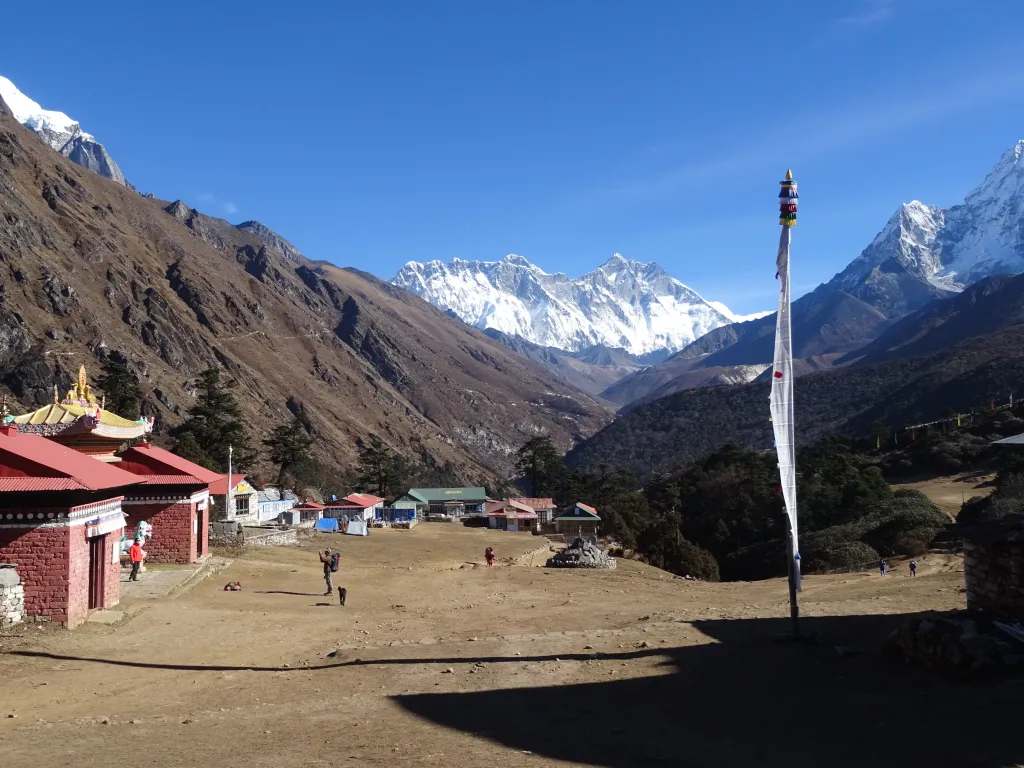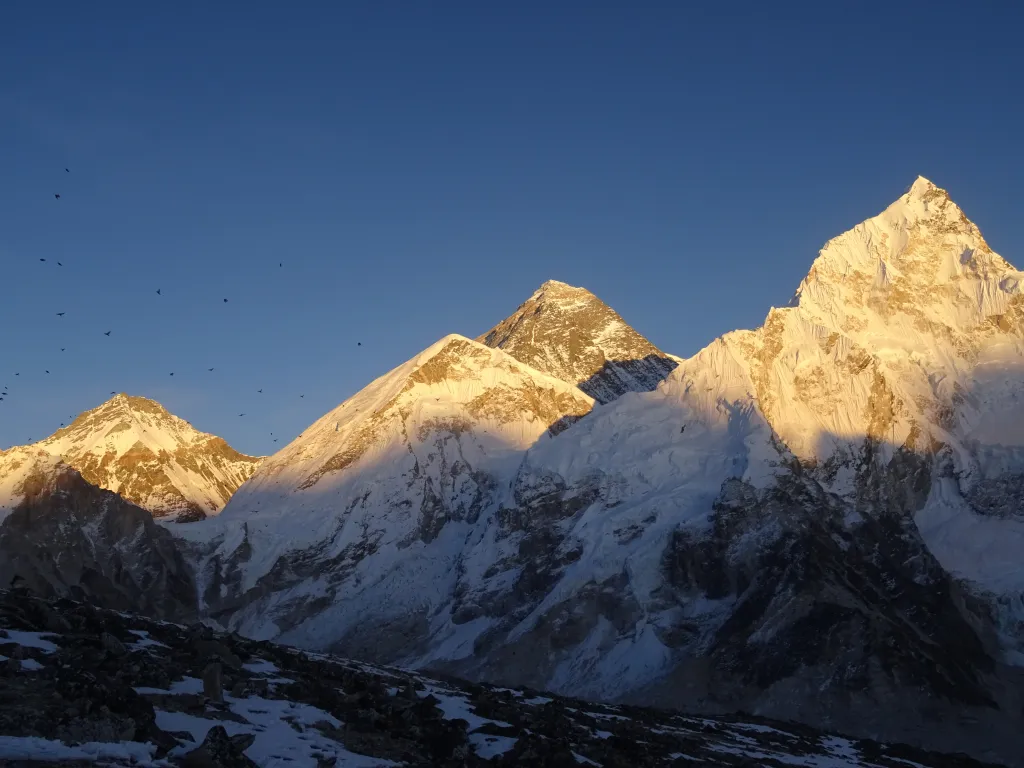Trekking in Nepal in January - Nepal Weather January [ How Cold ] 2022-23-24
January is the first month of the new calendar year and it is celebrated as New Year in many countries. If you are a keen adventure seeker and want to experience an unorthodox, innovative, and fascinating way of celebrating New Year or Christmas, remember Mountain Mart Treks for Trekking in Nepal in January. Trekking in Nepal in January offers serene natural beauty, chill environment, panoramic scenery, and the coruscating view of snow-capped mountains from the high viewpoint in a broad daylight. This is the best month to capture the magnificent view of the pristine surrounding and serene landscape.
.webp)
Winter Trek to Everest Base Camp
January falls on mid-winter in Nepal. Most of the trekkers and trekking companies assume that trekking in winter is impossible. MMT guarantees that with certain precautions, guidelines, and equipment, trekking in January will be an absolutely possible and perfect blessing.
In January, trekking in the higher elevation is risky and challenging; but the shorter treks or lower region trek is a suitable alternative for the trekkers. There are few suitable trekking packages for the month of January which are short, economical, comfortable and rejuvenating; like Everest Panorama Trek, Ghorepani Poon Hill Trek, Mardi Himal Trek or ABC 5days Trek.
Highlights of trekking in Nepal in January:
- In January, the trails are quiet, inactive and less crowded which offers ample opportunity to walk leisurely and explore serene beauty in trails.
- The sky remains crystal clear and sparkling at day time. There is also less chance of precipitation or a hazy climate at higher altitudes.
- Trekking in this month offers the spectacular view of dazzling mountains and cerulean landscape.
- This month is the best time for professional mountain photography
- Due to less trekker in trails, there will be proper accommodation plus hospitality service; plenty of warm meals and extra duvet facilities in tea houses and lodges.
Pros and Cons of Trekking in January:

Welcome Dinner hosted by Mountain Mart Trek
The climate of the higher region will be colder at night as the temperature drops down to 2° to -20°C. In the early morning, the climate will be misty and dews are seen on the roof, grasses, trees, and pipelines. Trekking in the higher elevation will be challenging and risky due to slippery trails, icy storms, foggy climate, and heavy snowfall.
Sometimes there will be no visibility and high chances of avalanches too and results in flight delay or flight cancellation. The trek will even be postponed or canceled if there is a risk of avalanche in higher elevation.
There are lots of advantages to Trekking in January. This is the perfect time to trek in the lower region up-to 4000m. Although night and morning will be cold and foggy, the day-time remains warm and sunny which makes the trek fascinating. If you commence the trail in the morning, you can easily reach the destination before dusk.
In January, the sky looks clear and snow-capped mountains seems stupendously magnificent. Trekking in the trails of Himalayas is always hostile and crowded during peak seasons. But this month, the trails are isolated, hassle-free and pleasant.
Trekking Tips in January:

Sky in Everest Trek
Trekking in January is an unusual and unique experience so you need to hire local expert guides and porters who know every trail and have acknowledgment about the weather.
It is always the best idea to begin the trek in the morning and reach the destinations before dusk.
Get well dehydrated to avoid Acute Mountain Sickness (AMS) while walking in the higher elevation.
Pack extra clothes, sleeping bags, thick jackets which will help you to keep warm in cold temperature.
As the temperature drops down lower than 0°C in higher altitude, it is wise to wear layers of clothes, winter gloves, winter hiking socks, winter hats, waterproof shoes with crampons if needed.
Behind every successful journey, there is a key role of guides, porters, expert advice, gears, and equipment. Follow all the tips wisely and add all the mentioned equipment in your trekking list.
Recommended Treks for January:
Everest Panorama Trek:

Everest Panorama
Everest Panorama Trek is 10 days Trek which commences from Kathmandu with 30 minutes scenic mountain flight. After the flight lands at Lukla, the trek begins from the lower altitude of the Everest Region following the suspension bridges, dense rhododendron forest, and different Sherpa villages: Phakding, Monjo, Namche, and Tengboche.
The Everest Panorama Trek’s final destination is Tengboche which is at an elevation of (3,864m/12,673ft). Trekking below 4000m is a wise decision than treading in higher elevation in January. There will not be any health issues, AMS risk or extreme cold.
Tengboche is profoundly renowned for the Tengboche monastery and also the splendid views of sparkling mountains: Mt. Everest, Mt. Thamserku, Ama Dablam, Mt Lhotse, Mt Nuptse and few more. The trek also offers the stupendous views of the massif, peaks; cerulean landscape; the lush vegetation; numerous monasteries, chortens, prayer wheels, and prayer flags.
Everest Panorama Trek must be the first choice of every trekker who is planning to trek in winter, especially in January.

Ghorepani Poon-Hill Trek package is specially tailored for the enthusiastic trekkers who are physically unfit or can’t trek to higher regions due to the risk of AMS. It is also the best alternative package to trek in January.
Ghorepani Poon-Hill Trek is a shorter version day which can be completed within 8 days. The higher elevation of the trek is the Poon-Hill viewpoint (3,210m/10,528ft) which is the vantage spot for the gleaming sunrise view. The cold climate hardly affects the trek.
The Trek offers one-day city excursion in Kathmandu and then fly to Pokhara from where the trek begins on 4-wheelers to Nayapul. The trek then continues through the villages: Hile, Ghorepani offering the majestic view of green rolling hills, surging Modi Khola, rhododendron forest or hills. The trek is also opportune to experience Gurung culture and lifestyle.
The trek is appropriate to trek in any season and for any trekkers. There is also no risk of AMS or injuries, so this trek will be the best alternative trek while trekking in Nepal in January.
Conclusion:
Trekking in Nepal in January is possible with conscious planning, expert advice, and genuine gears. Although January is a cold month, the lower region is not that cold; with proper clothing and extra jackets plus a sleeping bag, anyone can accomplish the trek comfortably. In January, there is less chances of rainfall, so the climate in the day time will be pleasant and awe-inspiring.
The trekking trails during this time will be peaceful, and pleasant due to less trekker on trails. Trekkers can enjoy each and every moment on trails. Even there will be ample time to capture the perfect shots of the panoramic landscape and dazzling peaks.
During the winter season, most of the hotels or lodges remain closed in higher elevation. Whereas in the lower region, there will be plenty of vacant rooms for trekkers. You can also enjoy amiable hospitality, accommodation, and delicious warm food. If you feel extreme cold, the lodge owner will also provide extra duvet for you.

Everest Sunset
Trekking in Nepal in January is not as same as trekking in spring and autumn. You need special knowledge about climate and trekking trails. MMT always recommends you to hire the local guides and purchase the genuine gears to accomplish the trek in a pleasant manner.
Note:
The climate in the winter season is unpredictable and changes from time to time or even minute to minute. Sometimes, the bad weather condition may affect flight schedules and causes flight delay or cancellation. We humbly request you to add some buffer days in your vacation to avoid any inconvenience caused by climate change. The smart decision while trekking in Nepal in January is adding some extra warm clothes and keeping the frequent weather update.
Contact us for any kind of help. We are 24X7 ready at your service. Feel free and ask your queries through emails or phone calls.


![Trekking in Nepal in January - Nepal Weather January [ How Cold ] 2022-23-24](https://www.mountainmarttreks.com/public/uploads/treeeek.webp)
.webp)






